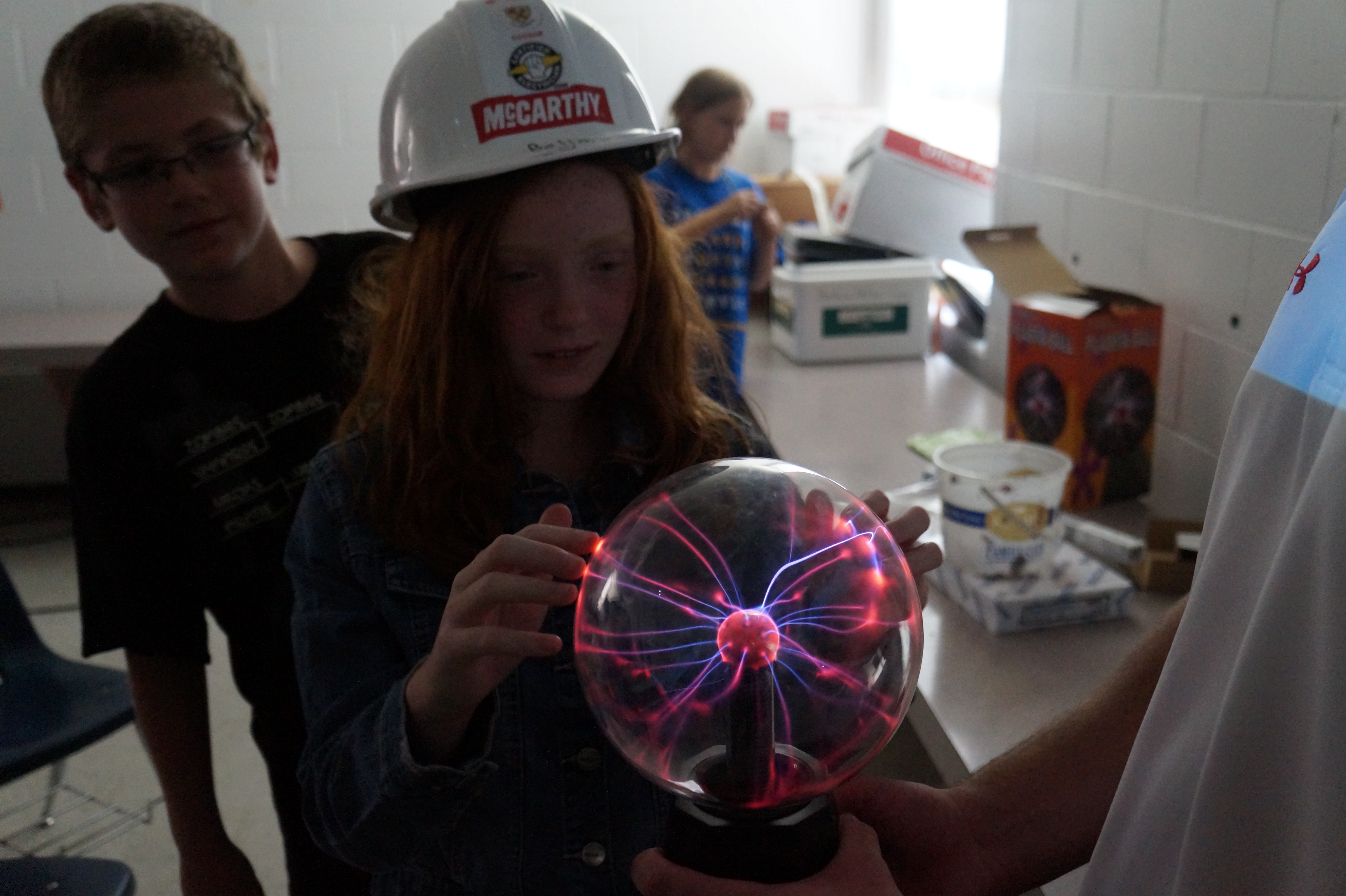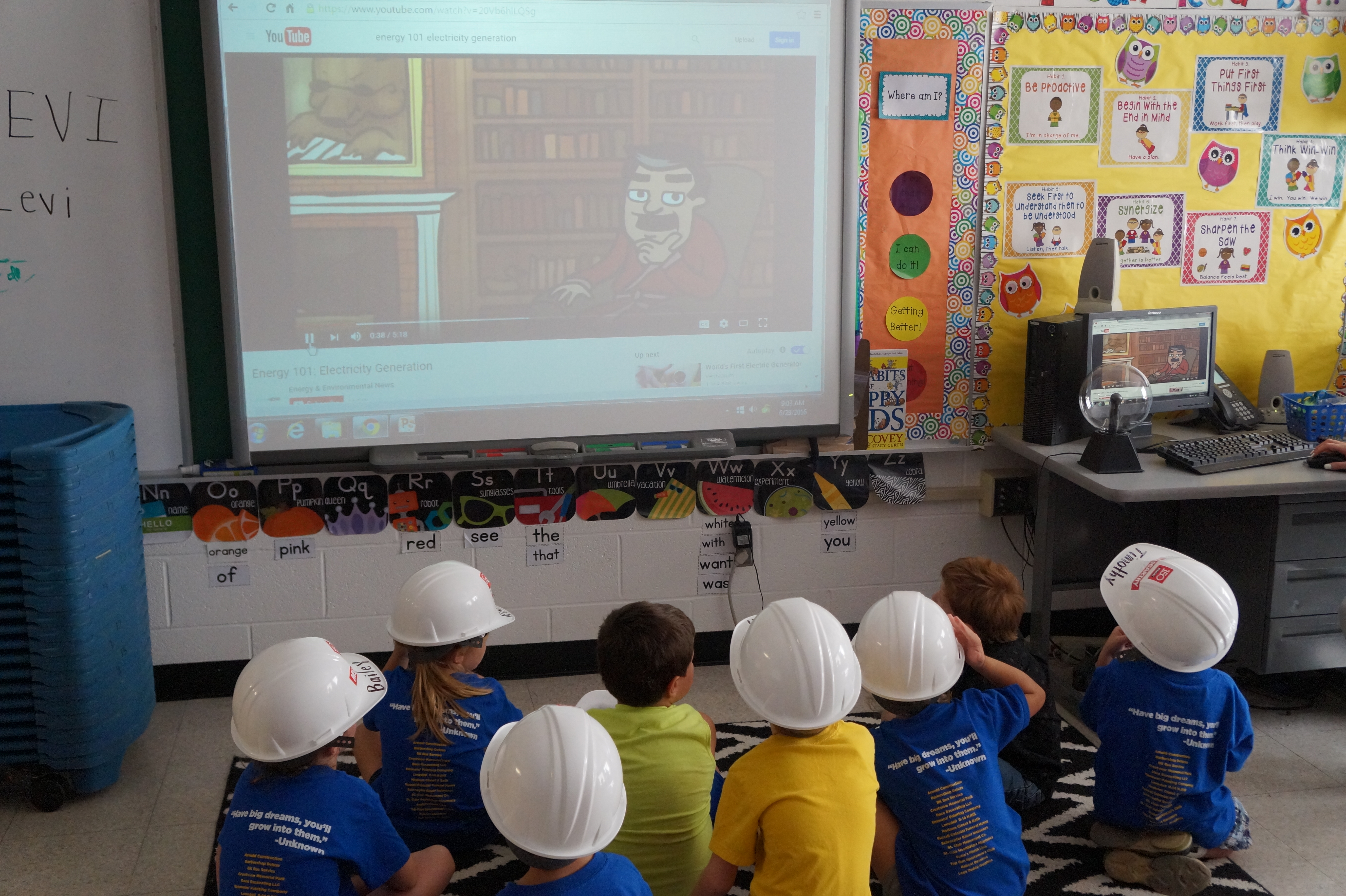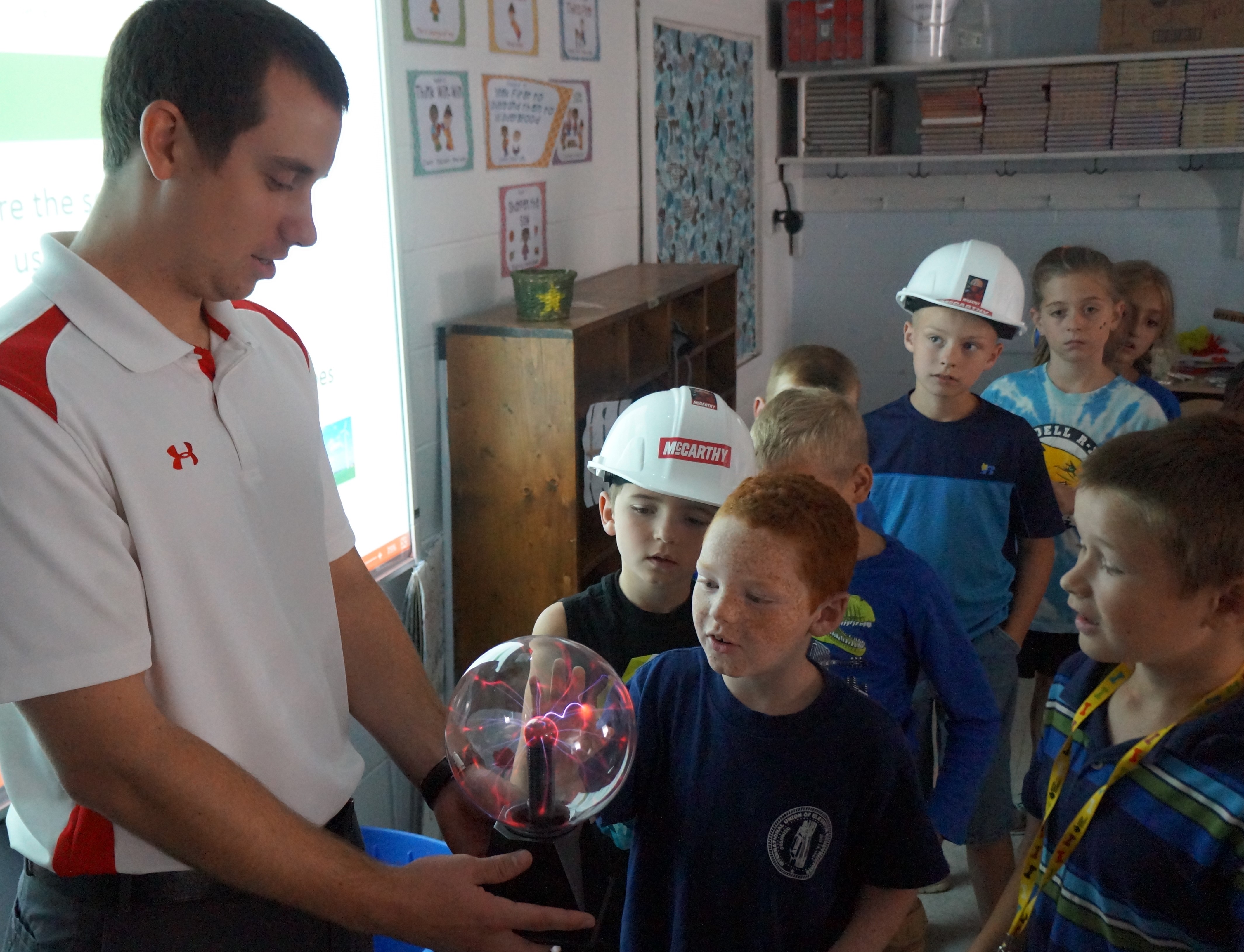When you’re an MEP contractor and a superb team-player, expert in constructability and being really effective at delivering complex infrastructure while keeping it out of sight, under floors, behind walls or in the ceiling—how do you then turn around and do self-promotions that matter and make a splash?
First, the name of the game is still teamwork with your partners, in this case with each  player taking their piece of the construction puzzle, and showing the public how the magic is performed, bringing the elements of infrastructure together to foster building performance.
player taking their piece of the construction puzzle, and showing the public how the magic is performed, bringing the elements of infrastructure together to foster building performance.
Simplicity is the secret to the success in education and public outreach, and nowhere is construction education more important than in the public schools, and where these same teams of partners can join forces to illustrate and explain the basics of each of the key construction disciplines—especially electrical and mechanical construction and how they combine to create buildings that are safe, good places to live, work and play.
This spring, for example, members of Guarantee Electrical Company (GECO) ventured down to  the Lonedell School District in East Central Missouri with partners from McCarthy Building Companies and Murphy Company. Their goal: to present a day-long Construction Camp, and show how the construction processes combine to make buildings work. All three firms took turns in explaining their practices with presentations gauged to the grade levels attending, from Kindergarten through 8th grade.
the Lonedell School District in East Central Missouri with partners from McCarthy Building Companies and Murphy Company. Their goal: to present a day-long Construction Camp, and show how the construction processes combine to make buildings work. All three firms took turns in explaining their practices with presentations gauged to the grade levels attending, from Kindergarten through 8th grade.
The key, of course, is to make learning fun, which in the case of the team from GECO involved bringing with them some of the magic of electricity with videos and demonstrations featuring battery tricks and including the use of Nikola Tesla’s magical plasma ball. With presentations tuned to grade level, the GECO classes included a video explaining some basics of electricity, including conductors and circuits, and why alternating current (AC) is good for for lighting and basic power and how direct current (DC) is used to run most electronics, cell phones and computers.
At Lonedell Elementary, GECO’s Nick Bievenue and Randy Weller were able to bring  some special effects together with the story value of AC vs. DC using Tesla’s Plasma Ball. Among dozens of inventions created by Nikola Tesla, the plasma ball provides a perfect “show and tell” device for illustrating principles of electricity. The device itself acts as a transformer, converting a very small DC charge into AC, resulting in a harmless, easily controlled stream of plasma glowing a brilliant pink inside the globe. In addition, because of its incredible responsiveness to the slightest changes in nearby electrical fields, the kids can manipulate the plasma simply touching the glass with the minimal conductivity of their fingers.
some special effects together with the story value of AC vs. DC using Tesla’s Plasma Ball. Among dozens of inventions created by Nikola Tesla, the plasma ball provides a perfect “show and tell” device for illustrating principles of electricity. The device itself acts as a transformer, converting a very small DC charge into AC, resulting in a harmless, easily controlled stream of plasma glowing a brilliant pink inside the globe. In addition, because of its incredible responsiveness to the slightest changes in nearby electrical fields, the kids can manipulate the plasma simply touching the glass with the minimal conductivity of their fingers.
Simple demonstrations sometimes make a profound impression, big ideas made tangible and a small indelible connection made when professionals take a day to tell their stories to a group of children in a day camp. All it takes is a little bit of showmanship with hardhats for the kids; it might just be a start for a child in the direction of a career.